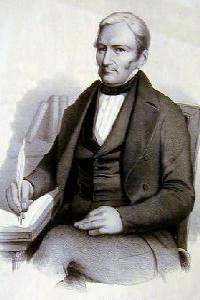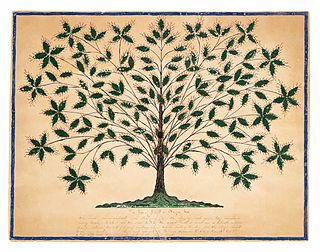Celibacy is the state of voluntarily being unmarried, sexually abstinent, or both, usually for religious reasons. It is often in association with the role of a religious official or devotee. In its narrow sense, the term celibacy is applied only to those for whom the unmarried state is the result of a sacred vow, act of renunciation, or religious conviction. In a wider sense, it is commonly understood to only mean abstinence from sexual activity.

A utopia typically describes an imaginary community or society that possesses highly desirable or near-perfect qualities for its members. It was coined by Sir Thomas More for his 1516 book Utopia, which describes a fictional island society in the New World.

The Oneida Community was a perfectionist religious communal society founded by John Humphrey Noyes and his followers in 1848 near Oneida, New York. The community believed that Jesus had already returned in AD 70, making it possible for them to bring about Jesus's millennial kingdom themselves, and be perfect and free of sin in this world, not just in Heaven. The Oneida Community practiced communalism, group marriage, male sexual continence, Oneida stirpiculture, and mutual criticism.

Cyrus Reed Teed was a U.S. eclectic physician and alchemist turned pseudoscientific religious leader and self-proclaimed messiah. In 1869, claiming divine inspiration, Teed took on the name Koresh and proposed a new set of scientific and religious ideas which he called Koreshanity, including the belief in the existence of a concave, or "cellular", Hollow Earth cosmology positing that the sky, humanity, and the surface of the Earth exist on the inside of a universe-encompassing sphere.
Polyfidelity is a type of non-monogamous relationship in which all members are recognized as equivalent to the other partners and comply to restrict sexual and romantic relationship activities to exclusively only other members within the group.

An intentional community is a voluntary residential community designed to foster a high degree of social cohesion and teamwork. Members typically unite around shared values, beliefs, or a common vision, which may be political, religious, spiritual, or simply focused on the practical benefits of cooperation and mutual support. While some groups emphasise shared ideologies, others are centred on enhancing social connections, sharing resources, and creating meaningful relationships.

Robert Francis Furchgott was an American biochemist winning Nobel Prize who contributed to the discovery of nitric oxide as a transient cellular signal in mammalian systems.
Group marriage or conjoint marriage is a marital arrangement where three or more adults enter into sexual, affective, romantic, or otherwise intimate short- or long-term partnerships, and share in any combination of finances, residences, care or kin work. Group marriage is considered a form of polygamy. While academic usage has traditionally treated group marriage as a marital arrangement, more recent usage has expanded the concept to allow for the inclusion of non-conjugal unions. Colloquial usage of group marriage has also been associated with polyamory and polyamorous families.

The Icarians were a French-based utopian socialist movement, established by the followers of politician, journalist, and author Étienne Cabet. In an attempt to put his economic and social theories into practice, Cabet led his followers to the United States of America in 1848, where the Icarians established a series of egalitarian communes in the states of Texas, Illinois, Iowa, Missouri, and California. The movement split several times due to factional disagreements.
The Koreshan Unity was a communal utopia formed by Cyrus Teed, a distant relative of Joseph Smith, founder of the Latter Day Saint movement. The Koreshans followed Teed's beliefs, called Koreshanity, and he was regarded by his adherents as "the new Messiah now in the World". After moving from New York to Illinois, the group eventually settled in Estero, Florida. The last person to officially admit membership to the Koreshans died in 1982.

John George Rapp was the founder of the religious sect called the Harmony Society and a number of associated communes.
Timothy A. Miller is a professor of Religious Studies at the University of Kansas at Lawrence. He has been involved in the Communal Studies Association (US) and Utopian Studies Society (Europe), and is past president of the International Communal Studies Association (Israel). He has a particular interest in intentional communities and new religious movements.
Lafayette Morehouse is an intentional community conceived in 1968 in Lafayette, California. The lifestyle it practices is often referred to as “Morehouse”. Inspired by its founder Dr. Victor Baranco and his first wife Dr. Suzanne Baranco, and now by his widow Dr. Cynthia Baranco, Morehouse has been a continuous experiment in group living for over 50 years, one of few such communities still in existence from the 1960s.

The Shakers are a sect of Christianity which practices celibacy, communal living, confession of sin, egalitarianism, and pacifism. After starting in England, it is thought that these communities spread into the cotton towns of North West England, with the football team of Bury taking on the Shaker name to acknowledge the Shaker community of Bury. The Shakers left England for the English colonies in North America in 1774. As they gained converts, the Shakers established numerous communities in the late-18th century through the entire 19th century. The first villages organized in Upstate New York and the New England states, and, through Shaker missionary efforts, Shaker communities appeared in the Midwestern states. Communities of Shakers were governed by area bishoprics and within the communities individuals were grouped into "family" units and worked together to manage daily activities. By 1836 eighteen major, long-term societies were founded, comprising some sixty families, along with a failed commune in Indiana. Many smaller, short-lived communities were established over the course of the 19th century, including two failed ventures into the Southeastern United States and an urban community in Philadelphia, Pennsylvania. The Shakers peaked in population by the 1840s and early 1850s, with a membership between 4,000 and 9,000. Growth in membership began to stagnate by the mid 1850s. In the turmoil of the American Civil War and subsequent Industrial Revolution, Shakerism went into severe decline. As the number of living Shakers diminished, Shaker communes were disbanded or otherwise ceased to exist. Some of their buildings and sites have become museums, and many are historic districts under the National Register of Historic Places. The only active community is Sabbathday Lake Shaker Village in Maine, which is composed of at least three active members.

The American Union of Associationists (AUA) was a national organization of supporters of the economic ideas of Charles Fourier (1772–1837) in the United States of America. Organized in 1846 in New York City as a federation of independent local Fourierist groups, the AUA published a weekly magazine called The Harbinger and published more than 70 books and pamphlets, which helped it to enjoy a brief moment of influence spreading the ideas of communitarianism to a circle of leading intellectuals.

Utopian socialism is the term often used to describe the first current of modern socialism and socialist thought as exemplified by the work of Henri de Saint-Simon, Charles Fourier, Étienne Cabet, and Robert Owen. Utopian socialism is often described as the presentation of visions and outlines for imaginary or futuristic ideal societies, with positive ideals being the main reason for moving society in such a direction. Later socialists and critics of utopian socialism viewed utopian socialism as not being grounded in actual material conditions of existing society. These visions of ideal societies competed with revolutionary and social democratic movements.
A classless society is a society in which no one is born into a social class like in a class society. Distinctions of wealth, income, education, culture, or social network might arise and would only be determined by individual experience and achievement in such a society. Thus, the concept posits not the absence of a social hierarchy but the uninheritability of class status. Helen Codere defines social class as a segment of the community, the members of which show a common social position in a hierarchical ranking. Codere suggests that a true class-organized society is one in which the hierarchy of prestige and social status is divisible into groups. Each group with its own social, economic, attitudinal and cultural characteristics, and each having differential degrees of power in community decision.

The Friends of Perfection Commune is an American Utopian community in San Francisco, California. The commune was founded in 1967 on principles of a common treasury, group marriage, free anonymous art, gay liberation, and selfless service. They were originally called the Sutter/Scott Street commune, and commonly referred to as the Kaliflower commune, after their newsletter of the same name. Because the commune's publishing activities helped spread their philosophy, they became a significant influence on Bay Area culture. Many members of The Angels of Light, a free psychedelic drag theater group, originally lived in the Kaliflower commune. The name Kaliflower referenced the Hindu name for the last and most violent age of humankind, the Kali Yuga.










